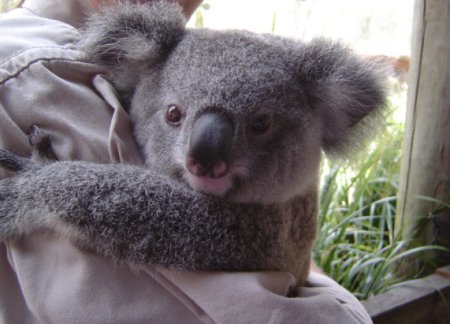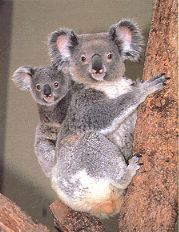
Koalas or koala-like animals probably first evolved on the Australian continent during the period when Australia began to drift slowly northward, gradually separating from the Antarctic land mass some 45 million years ago. Fossil remains of koala-like animals have been found dating back to 25 million years ago. As the climate changed and Australia became drier, vegetation altered until what we recognise as eucalyptus, or gum trees, evolved and koalas became dependent on them for food.


The Koala is the only mammal, other than the Greater Glider and Ringtail Possum, which can survive on a diet of eucalytus leaves. Eucalyptus leaves are very fibrous and low in nutrition, and to most animals are extremely poisonous. To cope with such a diet, nature has equipped koalas with specialised adaptations. A very slow metabolic rate allows koalas to retain food within their digestive system for a relatively long period of time, maximising the amount of energy able to be extracted. At the same time, this slow metabolic rate minimises energy requirements. Koalas also sleep somewhere between 18 and 22 hours each day in order to conserve energy.
| Queensland |
25,000 to 50,000 |
| Nea South Wales |
10,000 - 15,000 |
| Western Australia |
Not present for 10,000 years |
| Northern Territory |
None |
| Tasmania |
None |
| South Australia and Victoria |
20,000 |
| All of the world |
100,000 |
